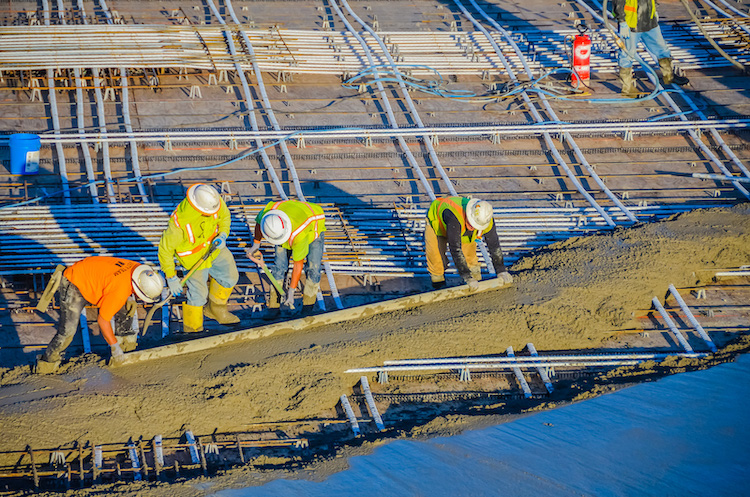The booming water/wastewater market is keeping design-builders busy, so much so that the economic equilibrium is off-center, slanted toward a place where demand often exceeds supply. It’s a design-builders’ (bidders) market.
On the supply side, many bidders are in selective mode. Project backlogs are often high.1 The labor market has tightened.2 And, let’s face it, chasing these projects is onerous and costly for the bidding firms. On the demand side, owners and water utilities continue to face abundant challenges that won’t simply evaporate. Further, fresh funding mechanisms now stoke the flames of demand. There’s plenty of work out there and new ways to help pay for it.
This leaves owners facing a real dilemma: how to sell their projects to the market and get the attention of qualified bidders. Fortunately, there are some efforts owners can take to draw those bidders in the door.
Engage Early and Often
Design-build firms regularly interface with many utilities across the nation. However, the sheer number of utilities—with small- and medium-sized utilities far outnumbering the large ones—makes it impossible for the design-builders to be in constant contact with everyone. Especially in today’s market, when a project is being planned, it’s critical for the owner to engage in early outreach with the bidding community to “advertise” the project and its drivers.
“It’s important to meet them where they are,” said Jason Canady, Public Works Director for the City of Grants Pass, OR. “We want to be having those conversations well in advance of the release of the request for proposal (RFP). We may not have the project fully defined, but we know generally what it is, and that’s when we need to be talking with the bidding community.”
Continual communication, transparency, equal treatment of all potential bidders, and even one-on-one confidential meetings can be key to design-builders enhancing their understanding of the project and keeping it on their radar screens well ahead of the RFP. It’s also a rapport-building process where owners and design-builders can forge a relationship that’s crucial to project success. For owners, being clear about the changing local political climate, budgetary constraints, and factors that cause delays in bringing the project to market are also elements to highlight for potential bidders.
Align with Project Goals
No two projects are completely alike, so it’s important to choose a delivery model that best fits the specific project’s needs, including budget, schedule, complexity, and more. What’s more, with design-builders able to be choosy about the projects they pursue, it’s key for owners to recognize that there are preferences among the bidding community—and perhaps from firm to firm—regarding various collaborative delivery models.
Budget and schedule are always two big goals for a project. Setting a reasonable budget, updating it regularly, and communicating it makes a difference. It’s also helpful to be clear to the prospective bidders about what’s included in the budget. Further, getting input from the design-build community on the budget will keep the prospects engaged. They can be a nice sounding board for the owner and help drive project success. No design-build team wants to see a project take an off-ramp because of a high guaranteed maximum price when the budget could’ve been more accurate at the front end. Schedule-wise, being open, transparent, and timely will aid in keeping the prospective bidders engaged. The design-build teams want to rely on the schedule because it impacts theirs, too.
Flexibility is another factor. Alternative project delivery is, ultimately, a collaborative model. Owners should define what they want, but how it gets there is up to the bidding team. Easier said than done, said Canady. “With a collaborative delivery model, as an owner I need to be more flexible and willing to listen to new and innovative ideas about what might be the best approach for our community,” he said. “It’s hard for us as owners, but we need to be open to flexibility. You might end up going in a direction you thought you’d never go, and it may be the best decision you ever made.”
Balance Risk Allocation
Conversations with the bidding community should also venture into the risk allocation/terms and conditions space. Risk sharing is a whole different animal for collaborative delivery, compared to traditional design-bid-build. When the owner and their legal team hold risk-sharing conversations with the prospective bidders, it goes a long way toward keeping that project attractive and at the top of the heap.
No one likes surprises when it comes to terms and conditions and risk sharing. Unquantifiable risk—risk that the prospective bidder can’t manage—is too big of a gamble for design-builders in today’s market. While in the past it could be part of the terms in the RFP—up for negotiation later—today it’s enough to make members of the bidding community flip the “no-go” switch without even proposing.
To better keep the bidding pool engaged, it can be beneficial to share draft contracts early and solicit feedback from the prospective bidders. Owners are beginning to have serious conversations about terms and conditions in an effort attract design-builders. Those who aren’t engaging in these discussions could be headed for disappointment, especially if the project’s risk allocation isn’t balanced.
There’s a clear theme (hint: collaboration) throughout the process of attracting qualified bidders for your collaborative delivery project. Yes, the current market conditions have the water design-build market cast firmly in a bidders’ market, but it doesn’t mean owners are fully at the mercy of the design-builders. Being deliberate about working together will go a long way toward driving successful outcomes for project delivery.
It is, after all, collaborative delivery models we’re talking about.
1. Joe Bosquin, “Construction Backlog Holds Steady on Infrastructure Tailwinds,” Construction Dive, July 12, 2023, https://www.constructiondive.com/news/construction-backlog-rides-infrastructure-tailwind-to-hold-steady/686555/.
2. Garo Houvnanian, Ady Kumar, and Ryan Luby,”Will a Labor Crunch Derail Plans to Upgrade US Infrastructure,” McKinsey & Company, October 17, 2022, https://www.mckinsey.com/industries/public-and-social-sector/our-insights/will-a-labor-crunch-derail-plans-to-upgrade-us-infrastructure.

